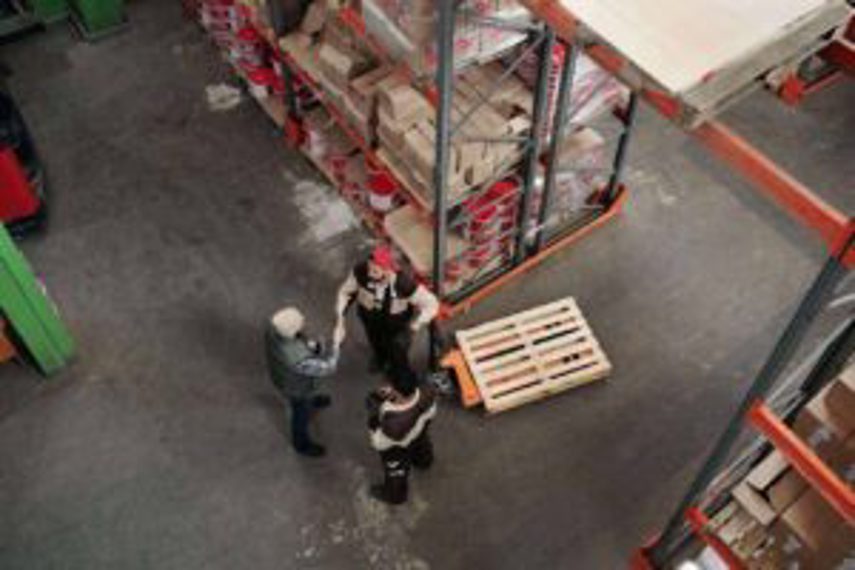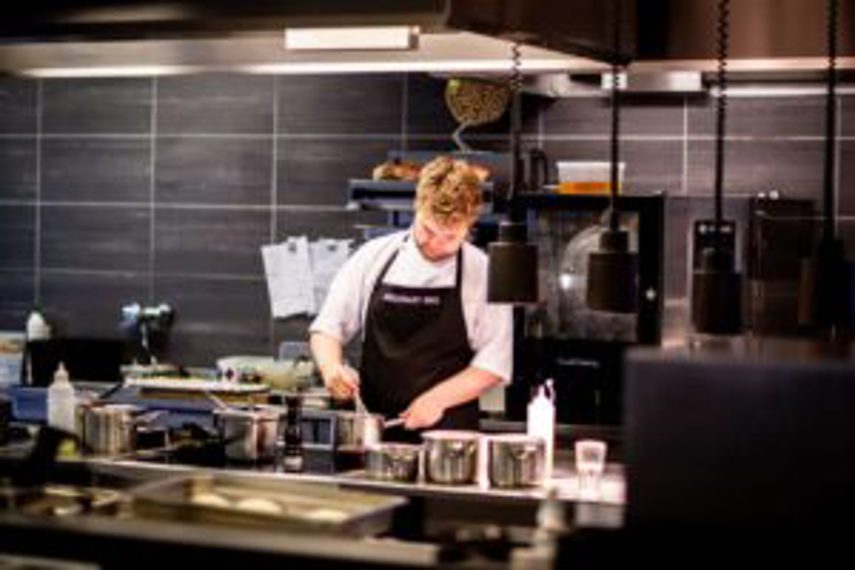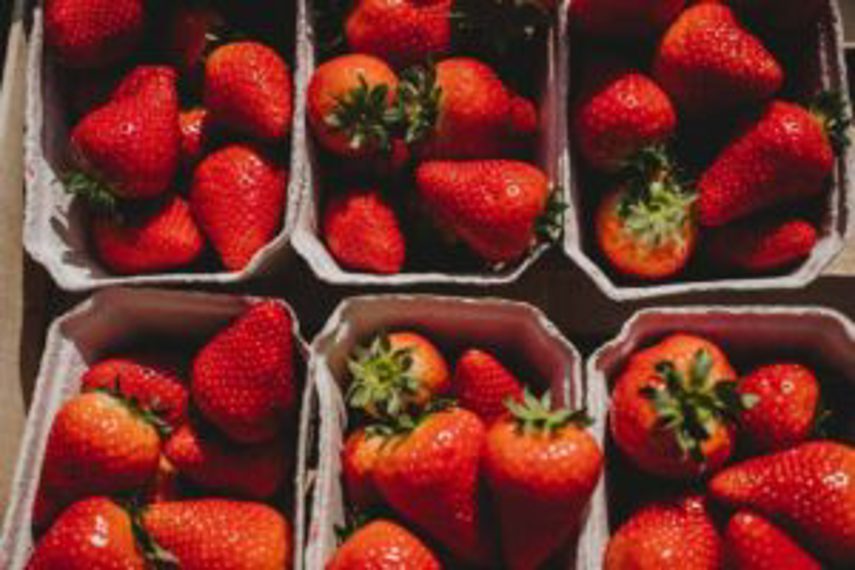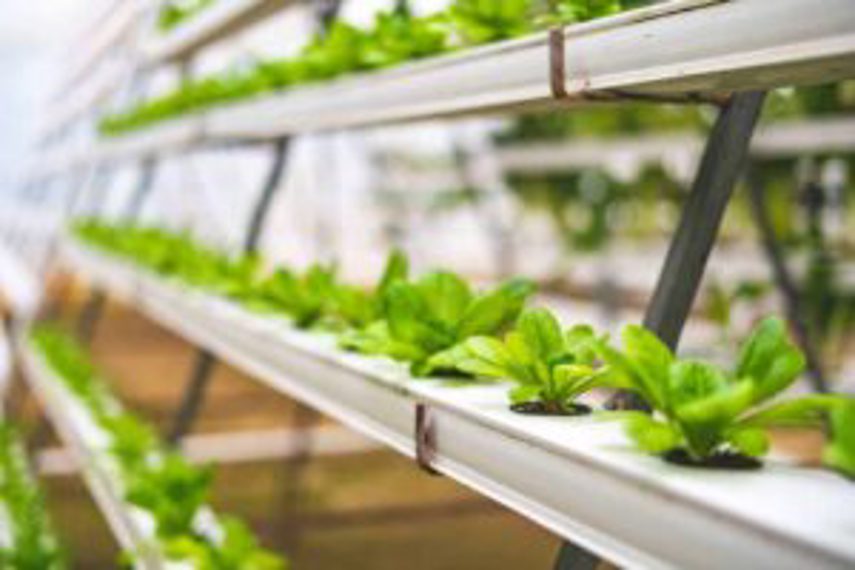
Table of Contents:
- What do wholesale food distribution do?
- Is a cash and carry a wholesaler?
- How big is the food wholesaling industry in the UK?
- What are the biggest wholesaler food suppliers in the UK?
- What role do wholesalers play in the food distribution network?
- How is wholesale food distribution different from retail?
- How do you start a food distribution business in the UK?
- How are wholesale food prices set?
- What margins do wholesale food distributions charge?
- Is wholesale food sold online and delivered?
- What wholesale food is available to the public?
- How do you find wholesale food distributors?
- What challenges does the food wholesaling industry currently face?
- What challenges will food wholesalers face in 2026?
- How does inventory software help with food wholesale?
- Wholesale Inventory management software
- Frequently Asked Questions
What do wholesale food distributors do?
A wholesale food distributor acts as a middleman between food and beverage manufacturers and operators, supporting the end-user by streamlining product distribution.
By warehousing products then delivering usable quantities of goods to the buyer, wholesalers are a key part of the food & beverage supply chain for businesses such as restaurants, cafes and retailers. Wholesalers can operate using different sales models, such as cash-and-carry offerings or delivery – which we’ll discuss in more detail below.
 Food wholesalers warehouse products in bulk, then provide usable amounts to businesses – from restaurants to hospitals.
Food wholesalers warehouse products in bulk, then provide usable amounts to businesses – from restaurants to hospitals.
Is a cash and carry a wholesaler?
Cash and carry is one of the sales models a wholesaler can use. On this model – as the name suggests – the customer pays cash up front then carries the product away. Since the model is based on cash payments, credit transactions – and any associated costs such as fees – are effectively eliminated.
A cash-and-carry business is still a wholesaler but is limited by its reliance on cash payment and the pick-up of goods. However, many cash-and-carry businesses are starting to modernise their model, and some are now offering online ordering to their customers.
How big is the food wholesaling industry in the UK?
In the UK, the food and drink wholesale sector generated £33.6 billion in turnover in 2023/24, supporting 1.5 million jobs across the value chain and contributing £57 billion in gross value added to the UK economy.
The food wholesale sector supplies food and drink products to over 400,000 businesses across the UK, from restaurants and hotels, to care homes, hospitals and prisons – and of course, retailers.
A key player in this industry is the Booker Group, which sells thousands of products to outlets such as grocery stores, and operates both cash-and-carry and delivery models. In Q1 of 2025/26, Booker’s sales rose to £2.3 billion, with core retail growth of 5.4%.
What are the biggest wholesale food suppliers in the UK?
There are several major whole food suppliers in the UK. The largest is Booker, which was acquired by supermarket giant Tesco in 2018 in a £3.7 billion deal to become an industry behemoth.
Other major wholesale food suppliers are Bidfood UK, JJ Food Service, Wanis International, Brake, Costco, and Bestway.
What role do wholesalers play in the food distribution network?
Wholesalers play a vital part in the supply chain. The wholesaler is the entity that buys directly from the producer or manufacturer, or from a larger distributor. The wholesaler could work with the food producer, for example, or an organisation that is producing items or goods in bulk.
The wholesaler chooses which source providers to work with depending on several factors – such as their ability to supply, cost, service, end-user demands, current market trends and the like.
Once the wholesaler has made a decision on who to purchase from, it will order the goods or product in bulk, then usually warehouse it pending final orders from its customers. Those customers are likely to be retailers, hospitality businesses, or organisations like universities and hospitals.
 The UK’s food wholesaling industry employs around 60,000 people, and plays a vital role in the food supply chain
The UK’s food wholesaling industry employs around 60,000 people, and plays a vital role in the food supply chain
How is wholesale food distribution different from retail?
Wholesale food distribution is quite a different proposition from retail. Wholesalers are generally the entities that sell to the retailers. They buy in bulk from the original source of the produce – such as the farmer or markets – and can often negotiate discounted pricing.
They then store the product in a warehouse before selling it on to retail outlets like caterers, pet food retailers, restaurants or the like.
How do you start a food distribution business in the UK?
Starting a food distribution business can be complex, but also extremely rewarding.
The first step is to analyse the market you’re looking to enter. You’ll want to see if there’s a niche that needs filling, an opportunity that has arisen, or a way to deliver a better service than the existing operators. Given the competitive nature of the UK’s food industry this analysis is vital, and key to the business’s future success.
Once a market opportunity has been identified, you’ll have to research regulatory requirements for food businesses and put a business strategy put in place – which includes finding a warehouse and office space. Your business strategy will also need a clear plan for finding, growing and retaining your customer base.
The food industry has its own particular set of requirements around health and safety, and even if you’re not producing food products, but warehousing and delivering them, you’ll need to be familiar with these. And of course, the food supply chain can be volatile – it can be susceptible to weather conditions or the quality of a crop, for example.
As such, starting a business in the food industry requires extensive planning and analysis to ensure it’s a viable long-term proposition.
 Any business that handles food products will need to comply with regulations for this industry – which means consulting the relevant authority for your country and/or city
Any business that handles food products will need to comply with regulations for this industry – which means consulting the relevant authority for your country and/or city
How are wholesale food prices set?
Wholesale food prices are set according to a number of different factors. But before we discuss this, it’s important to differentiate between wholesale and retail prices.
The wholesaler buys from the original producer – say, a farmer, or market –before selling the goods on to the retailer. The pricing at each point is driven by different factors.
When the wholesaler is buying from the producer, pricing takes into account the fact you’re buying in bulk, commercial relationships, and of course the cost of making the product. The producer will want to be making a profit when selling to the wholesaler, and will add a margin before selling it on.
When the wholesaler then sells to the retailer, it is a different proposition. The retailer will be looking to purchase an amount of goods at a price it knows is less than the customer is willing to pay.
There are different strategies when figuring the final price point. A common strategy is absorption pricing, where all costs – including those which are fixed and the profit margin added – are factored into the final price.
Another pricing strategy to use is differentiated pricing, which is calculated in response to demand for the product. This is based more on what a customer is willing to pay, and means different price points will be reached depending on the market circumstances.
What margins do wholesale food distributors charge?
The margins charged by wholesale food distributors vary depending on the business but can sit as low as 10% or as high as 30%.
It can also vary depending on the product, and how each product fits into the company’s overall selling strategy. For example, you might have ‘loss leaders’ in the mix.
As a wholesaler you’ll need to figure out an ‘average’ margin across all the products you sell, to cover all operating costs and allow for a healthy profit margin on top. This ensures the company will generate a profit and has a sustainable future.
So how do you calculate the gross profit margin percentage? Generally, you’ll use this formula:
Gross Profit Margin = (Net sales – Cost of Goods Sold / Net sales) x 100
For example, a packet of chips costs £1. It is sold for £3.
That means the gross profit margin is [(£3 - £1) / 3] x 100 – which equates to 67%.
Managing your profit margins is most efficient using software that can track your costs accurately – and this is especially true in times when supply chains are disrupted and costs change quickly.
- Learn more: How to calculate profit margins
 Setting prices and managing profit margins is key to the success of your business – and while this sounds simple, with frequent or major price fluctuations these tasks can become complicated
Setting prices and managing profit margins is key to the success of your business – and while this sounds simple, with frequent or major price fluctuations these tasks can become complicated
Is wholesale food sold online and delivered?
The short answer: Yes – and increasingly so.
When the Covid-19 pandemic hit, the wholesale food sector underwent significant changes in its delivery model.
Originally, the wholesaler was the go-between for the producer and the retail outlet. Under this model, the wholesale food was often sold online and delivered to the end-user. Many wholesalers also often offered ‘cash and carry’ to their customers.
However, the pandemic forced wholesalers to adapt their business models, as lockdowns in the UK shuttered many of the wholesale food sector’s traditional clients such as restaurants, bars and cafes.
As a result, the industry saw an increase in wholesalers who sell via apps like Foodchain. Since the pandemic, businesses have continued to adopt this model. In 2024, the global online food delivery market was estimated to be worth $288.84 billion and is expected to reach $505.50 billion by 2030.
- Learn more: Unleashed B2B eCommerce Store
What wholesale food is available to the public?
The wholesale food industry traditionally had a business-centric customer base. However, when the Covid-19 pandemic forced people to stay at home and businesses to shut, wholesalers shifted to a model that sells to both businesses and individuals. This was partly to shift stock that was left on shelves, and partly as a way to protect and futureproof themselves against further business shocks.
Since then, many wholesalers stuck to the same model, keeping their doors open to the public and not just businesses. In 2020, only 30% if wholesalers in the UK remained B2B.
So what do you need to set up an online store for B2C sales to the public?
You’ll need an online store – powered by a provider like Shopify or Amazon – and you’ll need inventory management software that integrates with this to manage your stock.

How do you find wholesale food distributors?
Finding online wholesale food distributors is easy. Most have a prominent digital presence with easy-to-use websites. Or you can use food directories such as this one to find the major sites, along with some details of what customers can expect from each.
Websites for individual wholesalers generally ask you to enter customer details or register to access the services. The Booker website, for example, asks for customers to log in using their customer number, in order to browse and purchase the products. This design reflects its traditional customer base – that is, businesses across the UK.
The Costco site has a different customer base – that is, individuals as well as businesses – and this is reflected in the emphasis on deals and bargain-buying opportunities.
If you’re looking for a supplier for your business, you’ll want to check information like fulfilment times, locations and payment options – and whether they can supply all the goods you need.
 If you’re looking to purchase products from a food wholesaler, you'll find a wealth of information online, including directories of businesses in this industry
If you’re looking to purchase products from a food wholesaler, you'll find a wealth of information online, including directories of businesses in this industry
What challenges does the food wholesaling industry currently face?
Within the food wholesaling industry, there are several challenges that wholesalers face when dealing with goods, including supply chain disruptions to post-pandemic challenges.
Supply chain disruption
The food industry is inherently volatile, with a supply chain that can be dependent on factors outside the producer’s control, such as major weather events.
The supply chain can also be disrupted by transport issues such as strikes and labour shortages – and in the case of the UK, by issues related to Brexit and new import-export rules.
Food quality and safety
Once the goods have reached the wholesaler, they need to be managed with great care. Food wholesalers are generally dealing with perishable goods and there needs to be infrastructure in place to ensure products remain fresh and can be sold. Usually this means warehousing that includes fridges, freezers and other storage that can preserve the quality of the product.
Dealing with perishable goods also means receiving and delivering products are time-sensitive, so efficient warehousing and fulfilment is essential.
Batch tracking
Another challenge for food wholesalers is ensuring goods are tracked and suppliers identified, in case of issues around quality or verification of the process. This is where finding and using the right tools can make all the difference to how your business operates – inventory management with batch-tracking functionality takes the hassle out of this part of food wholesaling.
What challenges will food wholesalers face in 2026?
Inflation
Over the last two years, inflation has impacted everyone. In July 2025, the overall inflation rate in the UK was 3.8%. Since the COVID-19 pandemic, food prices - such as meat and dairy products - have continued to rise. These rises have not only put a strain on the hospitality industry, but also on families.
Years after the pandemic, production costs remain high due to skilled labour shortages and unprecedented challenges, such as the conflict between Russia and Ukraine. The World Economic Outlook reported, a 1% decrease in global harvests increased food prices by 8.5%.
AI
While Artificial Intelligence (AI) can benefit the food industry, from reducing waste, improving customer service and improving supply chain management through automation, it also comes with some challenges. AI can come with security risks. Customer data could be stolen if precautions – such as two-factor authentication (2FA), constant monitoring, and staff training – aren’t in place.
The costs associated with an AI system, including installation and maintenance fees, can be high due to its complex operational and functional capabilities. Developing a system that matches your business’s needs can come with a high price, especially when integrating your accounting or CRM.
Global warming on food production
Extreme weather events have become more frequent and severe in recent years. In 2025, the UK experienced its hottest summer on record, with prolonged heatwaves and unpredictable rainfall patterns. These conditions have disrupted crop cycles and reduced yields, particularly for temperature-sensitive produce like lettuce, strawberries, and potatoes.
Globally, rising temperatures and water shortages have impacted major agricultural regions, including parts of Southern Europe and North Africa. According to Stanford University, the impact of climate change will reduce global crop yields by 8%. For wholesalers, this means increased volatility in supply, higher prices, and the need to diversify sourcing strategies to mitigate risk.
 Many of the challenges of 2023 will continue into 2024 for food wholesalers, and implementing systems like the right inventory software will help give you the flexibility and adaptability you need
Many of the challenges of 2023 will continue into 2024 for food wholesalers, and implementing systems like the right inventory software will help give you the flexibility and adaptability you need
How does inventory software help with food wholesale?
If there’s one thing the past few years have taught food wholesalers, it’s that the flexibility to adapt to external conditions is essential. That’s where our food manufacturing software can help.
The question is: How do you achieve this?
One key factor in any business’s ability to adapt is using the right software. With software suited to your needs you’ll be able to maintain supplier information, track incoming and outgoing inventory, and keep on top of minimum and maximum inventory levels – all while batch-tracking and taking into account variable factors like lead times and pricing.
Inventory software will also keep an accurate record of your costs so you can maintain visibility over profit margins – which can otherwise become complicated with fluctuations in the price of goods.
And of course, if you’re going to pivot to a new business model – whether it's B2B or B2C eCommerce – you'll want software that includes or integrates with apps that give you this functionality.
Wholesale Inventory Management Software
Unleashed’s wholesale inventory management software gives businesses full control over their stock with real-time visibility across multiple warehouses. It helps prevent overstocking and stock-outs through automated demand forecasting, while batch and serial tracking improve traceability. Unleashed integrates with over 40 systems, including Xero, Shopify, and Amazon, and supports multi-currency operations. A built-in B2B eCommerce portal also simplifies customer ordering and reduces admin workload.
Start your 14-day free trial today – no credit card needed.
Frequently Asked Questions
What is the difference between a food distributor and a food retailer?
Food distributor connects food retailers and producers by purchasing products in bulk, storing the goods in their warehouse and delivering them in smaller quantities to their customers. Distributors offer additional services, including transporting goods and managing inventory.
Food retailers - including supermarkets, convenience stores and online food retailers -purchase goods from food distributors or wholesalers and sell smaller quantities to the public.
What are the challenges of food distribution?
Challenges of food distribution include:
- Supply chain disruptions affecting deliveries between wholesalers and retailers.
- Maintaining the quality and safety of perishable goods by ensuring the correct temperature in the warehouse and meeting food safety standards enforced by the Food Standards Agency (UK) or the Food and Drug Administration (US).
- Staff shortages, specifically in logistics and distribution, can disrupt operations in the warehouse.
What are the factors affecting food distribution?
Several factors can impact food distribution, including environmental issues (climate change), socio-political conditions (conflict), economic factors (price rises), and logistical challenges (staff shortages).
How to find a food distributor for your product?
Finding a food distributor online is straightforward thanks to the strong digital presence of most wholesalers. Many have user-friendly websites where you can browse products and services, though some may require registration or customer details to access full features. For example, Booker caters to UK businesses and requires a customer login, while Costco serves both individuals and businesses, with a focus on deals and bulk buying.
To choose the right distributor, check key details like fulfilment times, delivery locations, payment options, and whether they can supply all the goods you need. You can also use online food directories to compare major distributors and see what each offers.
